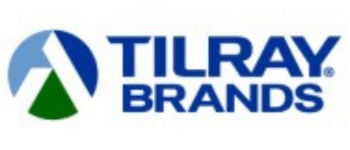The Most Volatile Stocks to Add To Your Watchlist for March 2025
Key takeaways
High risk, high reward – Volatile stocks can offer massive upside potential, but their price swings can be extreme, making them better suited for risk-tolerant investors.
Sector-driven turbulence – Many of these stocks are highly sensitive to external factors like commodity prices, consumer trends, and regulatory changes, meaning their volatility often follows industry-wide trends rather than company-specific issues.
Timing is everything – In highly volatile sectors, entry and exit points can make or break an investment, so understanding macroeconomic conditions, earnings trends, and sentiment shifts is crucial.
3 stocks I like better than the ones on this list.The stock market is often thought of as a rollercoaster. However, depending on what you are investing in, that rollercoaster could be boring or have you retching in the trash can after you get off.That is because stocks, depending on their market capitalization, earnings, news releases, or reputation, can have high volatility, which can cause alarming price movements.
And even in the midst of the pandemic, we saw reliable, income-paying restaurant stocks collapse in price due to lockdowns materially impacting their business. When we seek out the most volatile stocks, we often do so intending to trade these stocks.
That’s because nobody wants to trade a stock that moves a percent or two per day. If you’re a trader, you want to be trading stocks with large swings in share price, so we can take advantage of those price swings on either the long or short end.
How can we measure stock market volatility?
Beta is a suitable way to measure the volatility of Canadian stocks. When we speak on a stock’s beta, we compare how much that stock will move relative to its benchmark index. For example, a company within the S&P 500 with a beta of “1.5” suggests that for every 1% move in the S&P 500, we can expect the stock to move 1.5%.
If a company has a beta of 0.5, we can expect for every 1% move in the index, it will only move 0.5%.The lower the beta, the lower the overall volatility of the stock itself. Higher-volatility stocks are often correlated with a high beta. You will often see low-beta stocks in the utility and industrial sectors. In contrast, high beta stocks often reside in healthcare stocks, or the technology, mining industries.
Typically, the S&P 500 is used as a benchmark for most U.S. stocks’ beta calculations. However, sites can use a different benchmark if they wish. For Canada, the Toronto Stock Exchange is often used.
Is there an index we can use for volatility?
The VIX index is excellent for judging the relative volatility of the markets. The VIX’s goal is to produce a measure of the constant, 30-day expected volatility of the U.S. stock markets. Many people swing trading stocks or day trading stocks will take advantage of and attempt to profit off short-term fluctuations in the price of the VIX.
Considerations when investing in the most volatile stocks
Traders often seek out high-volatility stocks to try and turn out significant gains. However, what many get tunnel vision with is the gains aspect of volatile stocks. They tend to forget about the losses, which can be severe and dramatic, and show up quick in stocks with high price volatility.
If your portfolio is made up exclusively of high-volatility stocks, you are likely putting yourself at extensive risk. Figure out if trading is suitable for you. Suppose you want to give it a shot. In that case, I’d suggest setting aside a tiny portion of your portfolio, one you’d be comfortable losing, to start trading.
It’s important to remember that you have less than a 10% chance of breaking even or making money when it comes to day trading. If you buy and sell these high-volatility stocks, know there is a good chance it will be an unprofitable endeavour. With that said, let’s look at some of the most volatile stocks to be trading right now.
Some parameters of this list of high-volatility stocks before we begin
We’ve screened the S&P 500 and around 400 stocks in Canada and have sorted them by their most recent beta. So, this list will not contain highly volatile penny stocks or stocks not listed on major exchanges. Make no mistake about it, however, even some of the stocks listed below on the major exchanges have significant amounts of volatility. This list was last fully updated on December 5th, 2022.
Bitcoin mining company
Bitfarms Ltd (TSE:BITF)

Bitfarms is a cryptocurrency mining company that operates large-scale facilities powered by low-cost hydroelectric energy. The company validates Bitcoin transactions and earns revenue through mining rewards and transaction fees. With operations in Canada, the U.S., and South America, Bitfarms is highly sensitive to Bitcoin’s price swings and network difficulty adjustments.
P/E: –
5 Yr Revenue Growth: 42.9%
5 Yr Earnings Growth: -%
5 Yr Dividend Growth: -%
Yield: -%
Bitcoin mining and digital infrastructure
Hut 8 Corp (TSE:HUT)

Hut 8 is another major Bitcoin miner but also operates in high-performance computing and cloud services. The company has positioned itself as more than just a crypto miner, aiming to diversify revenue streams while maintaining a strong Bitcoin treasury.
P/E: 24.7
5 Yr Revenue Growth: 21.3%
5 Yr Earnings Growth: 114.2%
5 Yr Dividend Growth: -%
Yield: -%
Crypto-focused financial services firm
Galaxy Digital Holdings (TSE:GLXY)

Galaxy Digital is a diversified financial services firm specializing in digital assets, offering trading, asset management, investment banking, and mining operations. Led by billionaire Mike Novogratz, the company is deeply tied to the cryptocurrency market’s volatility.
P/E: 134.3
5 Yr Revenue Growth: -%
5 Yr Earnings Growth: -%
5 Yr Dividend Growth: -%
Yield: -%
E-commerce platform for businesses
Shopify (TSE:SHOP)

Shopify is Canada’s most prominent tech company, providing e-commerce solutions for businesses of all sizes. The company has seen wild price swings, especially after the pandemic-driven e-commerce boom cooled off.
P/E: –
5 Yr Revenue Growth: 41.3%
5 Yr Earnings Growth: -%
5 Yr Dividend Growth: -%
Yield: -%
Global cannabis and alcohol company
Tilray (TSE:TLRY)

Tilray is one of the biggest names in cannabis, producing medical and recreational marijuana while expanding into alcoholic beverages. Volatility remains high due to shifting regulations and fluctuating demand.
P/E: –
5 Yr Revenue Growth: 37.5%
5 Yr Earnings Growth: -%
5 Yr Dividend Growth: -%
Yield: -%
Gold exploration company in Brazil
Belo Sun Mining (TSE:BSX)

Belo Sun Mining is a gold exploration company focused on developing the Volta Grande project in Brazil. While the project holds significant potential, permitting delays, environmental concerns, and political uncertainty in Brazil have made this stock highly volatile.
P/E: –
5 Yr Revenue Growth: -%
5 Yr Earnings Growth: -%
5 Yr Dividend Growth: -%
Yield: -%
Oil and gas exploration and production
Kolibri Global Energy (TSE:KEI)

Kolibri Global Energy is a small-cap oil and gas company with operations primarily in the U.S. The company focuses on unconventional resource plays, making it highly sensitive to oil and gas price fluctuations.
P/E: 10.6
5 Yr Revenue Growth: 28.3%
5 Yr Earnings Growth: -%
5 Yr Dividend Growth: -%
Yield: -%
Silver and gold mining company
Avino Silver & Gold Mines (TSE:ASM)

Avino Silver & Gold Mines operates in Mexico, focusing on silver and gold production. The company is known for its leverage to silver prices, making it one of the more volatile mining stocks on the TSX.
P/E: 46.2
5 Yr Revenue Growth: 17.1%
5 Yr Earnings Growth: -%
5 Yr Dividend Growth: -%
Yield: -%
What is the most volatile stock in 2022?
McEwen Mining (TSE:MUX). Out of the 500 stocks on the S&P 500 and the 400+ Canadian stocks we have inside our stock screener, McEwen Mining, which has a beta of over 5.18, was the most volatile stock in 2022.A beta of 5.18 suggests that when the TSX Index moved 1%, McEwan moved more than 5 times that.
How do I find the most volatile stock?
You can utilize most stock screeners to identify the most volatile stocks. There are a variety of ways to define volatility. Most use beta, but other investors will look up stocks making the most significant moves over a week, two-week, or even a month-long timespan to take advantage of short-term volatility.
Over the short term, a stock with a low beta could be more volatile than usual because of a poor earnings report, a news release, or even a potential management change. So, short-term price movements in this regard are great screens.
Which type of stocks are most volatile?
You will typically see high volatility in the energy, mining, pharmaceutical stocks, and technology sectors. There are plenty of volatile stocks in other sectors, but these tend to have the highest betas.
Which investments are most volatile?
Investments in companies with small market capitalizations, low volumes, and overall low share floats tend to be the most volatile. Wide swings in stock price can happen based on just a few transactions if there is not a high volume of trade.
You will typically see this in the mining sector, particularly companies that are pre-revenue and just exploring. Single news headlines can send these stocks up by triple digits. Another highly volatile investment would be penny stocks, for most of the reasons stated above. The high volatility of these stocks and sectors makes them extremely popular for day traders.
Which sector is least volatile?
If you’re looking for lower volatility stocks, you’ll likely want to look to sectors that provide stable cash flows and contain larger blue-chip companies. The consumer staple, utility, and healthcare sectors often offer this.

